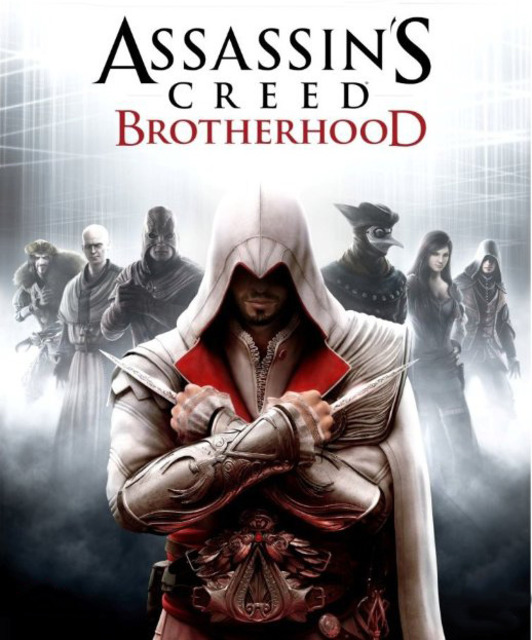When in Rome
Following precisely from where Ezio’s last escapade left off, Assassins’ Creed Brotherhood plunges the player into a series of explosive opening sequences which lays the path for the Assassins’ new struggle against the Borgia armies. Whereas the previous games allowed entrance to multiple cities, Brotherhood reduces its number of sandbox playgrounds to focus exclusively on the city of Rome, and what a beautifully orchestrated environment that is. The area is allotted with familiar details you’ve come accustomed to with the series, with ridges and pigeon holes allowing Ezio to easily scale across buildings, whilst new mechanics enable faster and easier passage through the vast Roman architecture. Horses are now a viable mode of transport within the gates of the city, whilst rope lifts enable an immediate launch to the top of buildings and a new underground tunnel network allows for instant transport from one point to another via the world map. The concept of using towers as sync points to reveal parts of the map remains, but is given context with the use of Borgia Towers, areas that require you to kill the captain of the Borgia influenced area, and reclaim that section of Rome. This not only reveals the surrounding area on the city map but also lets you purchase and use property and services in that area. This expands on the last game’s renovation options in the villa, using a Fable-esque system to buy and open shops, tunnel entrances, and also renovating unused buildings for use of factions to help you, presenting Ezio as a bit of a property developer on the side when he’s not busy stabbing people in the neck. The amount of income you receive is controlled by having to manually retrieve your money from the banks you own, which are limited by the amount of resource they can hold based on how many banks you’ve opened, but the general premise remains – the more property you own, the more income you receive.
Although situated primarily in Rome, Brotherhood has a deceptive variety of environments for you to explore, from descending into underground dungeons to revisiting memories of Ezio’s pursuit of a girl in Florence. The game also delves deeper into Italian history with likes of exploring Da Vinchi’s various machine concepts, having fallen into enemy hands requiring you to retrieve the machine, resulting in a rigid mission structure which comprimises of a stealthy infiltration to get the machine followed by an explosive escape sequence where you take control of the captured device and turn it back on its captors. When exploring environments there’s still the issue of the game preventing you from entering areas of the map it doesn’t want you to, which is given context by the Animus not having the memory available to you. However even on missions with a primarily linear level design, I found this was used to keep me straying too far off track, or prevented me from going into an area if there was something else I had to do first.
Combat mechanics have ultimately become more streamlined, predominately with the use of one-hit executions, which allow you rack up chains of kills after a single enemy has been brought down. The arsenal of weapons available to the player has also increased, on the verge on becoming slightly cluttered if it wasn’t for the context given to certain weapon uses, such as whether or not you’re taking a stealth approach on a target. The new concept of hiring assassins to fight alongside you is a profoundly effective way of dispatching your targets, using up a recharging resource bar to trigger your assassin to leap out of the nearest corner ambushing their victim, or calling in a hail of arrows that wipes out everyone on screen. When you are not in combat, the parkour exploration of the city is still as much of a joy as it always was. Game missions often include elegant set pieces for you to maneuver through, though some of the pursuit or escape missions were often a case of establishing simple environment puzzles and repeating them.
At a glance, Brotherhood’s visuals may only seem a minimal improvement over the previous game, but that’s not to say the game’s rendered spaces aren’t still utterly gorgeous. There are still some frame rate issues now and again, and texture pop-ins are indeed noticeable, but subtle changes in environmental aspects such as the game’s lighting shows there has somewhat been an overhaul of the engine. Though the camera can be a little inconsistent when controlling jumps through the more enclosed areas, and the often present load screens hang a little longer than you would probably want them to, Brotherhood is technically still a bit of a spectacle to behold. Overall the game does encompass itself as a slightly familiar experience, though it’s evidently a refined and streamlined affair that has enough content to ensure your visit to Rome is indeed a pleasant one. [7/10]
